Menu
Physics Lesson 16.7.3 - Induced Electromotive Force as Motional Emf
Please provide a rating, it takes seconds and helps us to keep this resource free for all to use
Welcome to our Physics lesson on Induced Electromotive Force as Motional Emf, this is the third lesson of our suite of physics lessons covering the topic of Faraday's Law of Induction, you can find links to the other lessons within this tutorial and access additional physics learning resources below this lesson.
Induced Electromotive Force as Motional Emf
Let's extend the discussion about the induced emf considering it from another viewpoint. As a special case of electromagnetic induction is when a magnetic force acts on a straight current carrying wire placed inside a uniform magnetic field is moving due right as shown in the figure below.
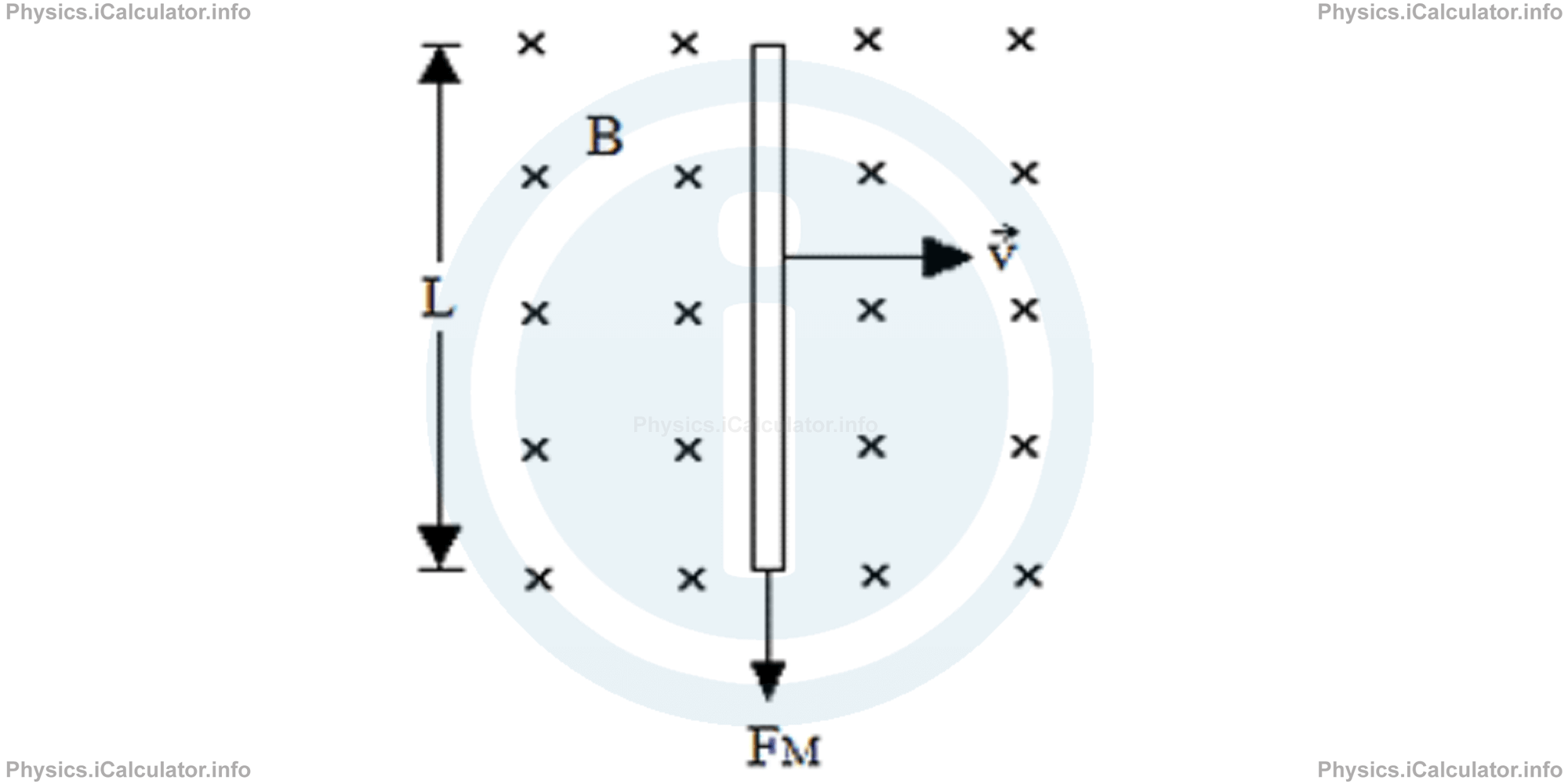
The direction of the resulting magnetic force is vertically down, based on the Fleming's Left Hand Rule explained in the previous tutorials. The scalar equation of this magnetic force is
Since the wire is moving due right, the magnetic force is balanced by another force acting in the upward direction. This force is the electric force Fe produced on the moving charges.
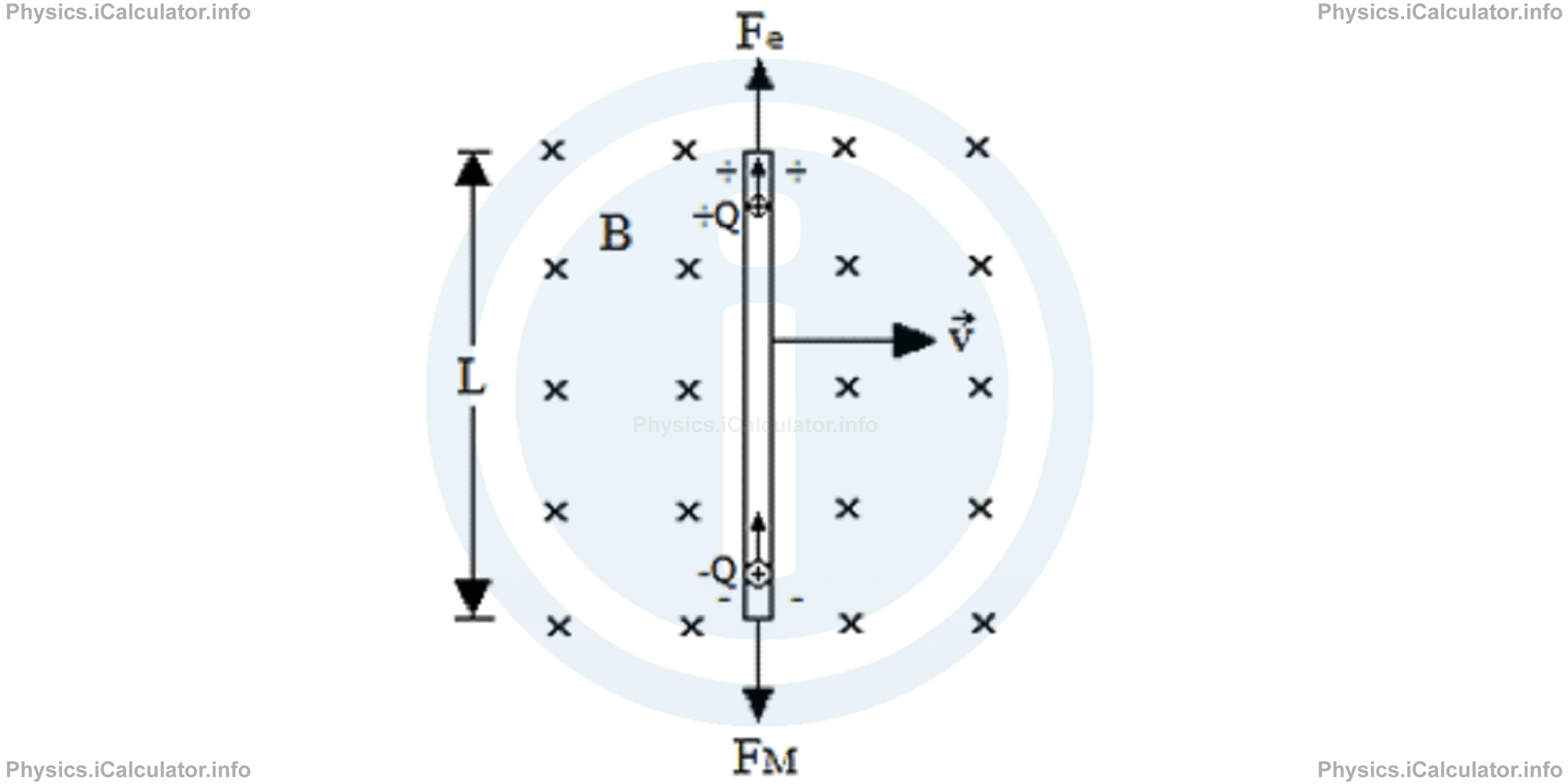
We can write the equation that shows mathematically this balance of forces as
Q ∙ v ∙ B = Q ∙ E
E = v ∙ B
Since the electric field produced by the moving charges is constant, we express the relationship between the electric field E and the potential difference ΔV across the ends of conducting wire as
Combining the last two equation, we obtain
This potential difference is equal to the emf ε of the wire as the resistance of wire is negligible. Obviously, this is an induced emf as it is caused due to the motion of wire and is not constant; it depends on the following factors:
- Magnitude of magnetic field - a stronger field causes a higher induced emf than a weaker magnetic field;
- Length of conductor - a longer conductor causes a higher induced emf than a shorter one;
- Velocity of conductor - a greater velocity causes a higher induced emf in the wire than a lower velocity.
Another factor that affects the induced emf produced in the wire is the angle between the moving direction and the wire itself. So far, we have considered only the case in which the moving direction is perpendicular to the wire's length. In this case, the induced emf is maximal. However, when we push the wire in another direction, the potential difference decreases until it becomes zero when the wire is pushed in the direction of its length. Hence, we write the fourth factor affecting the amount of induced emf as - The angle formed by the wire and its moving direction.
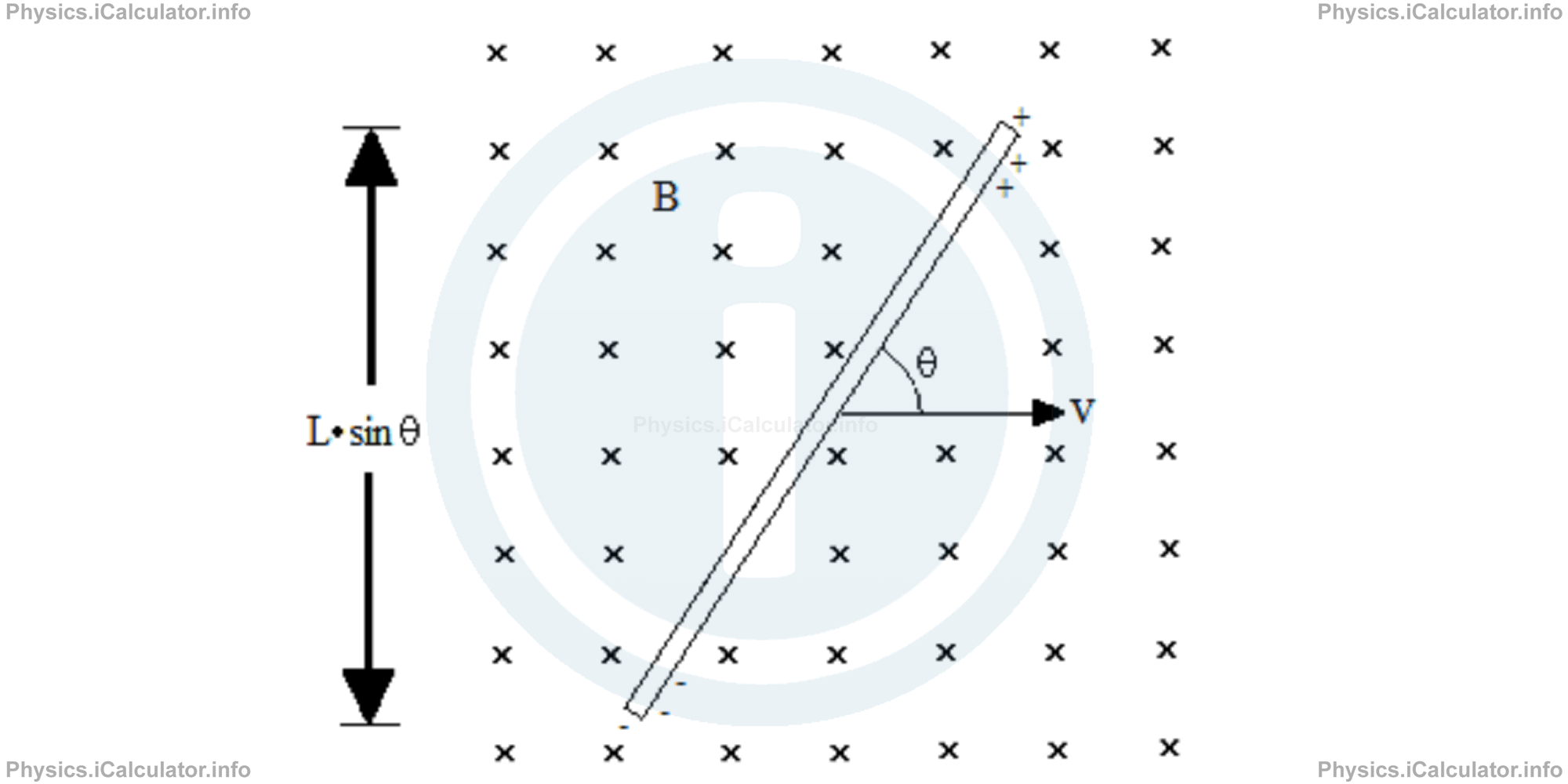
Hence, the formula of emf induced in the conducting wire when it moves inside a magnetic field is
If the conductor that is sliding due right is part of a closed conducting path as shown in the figure below,
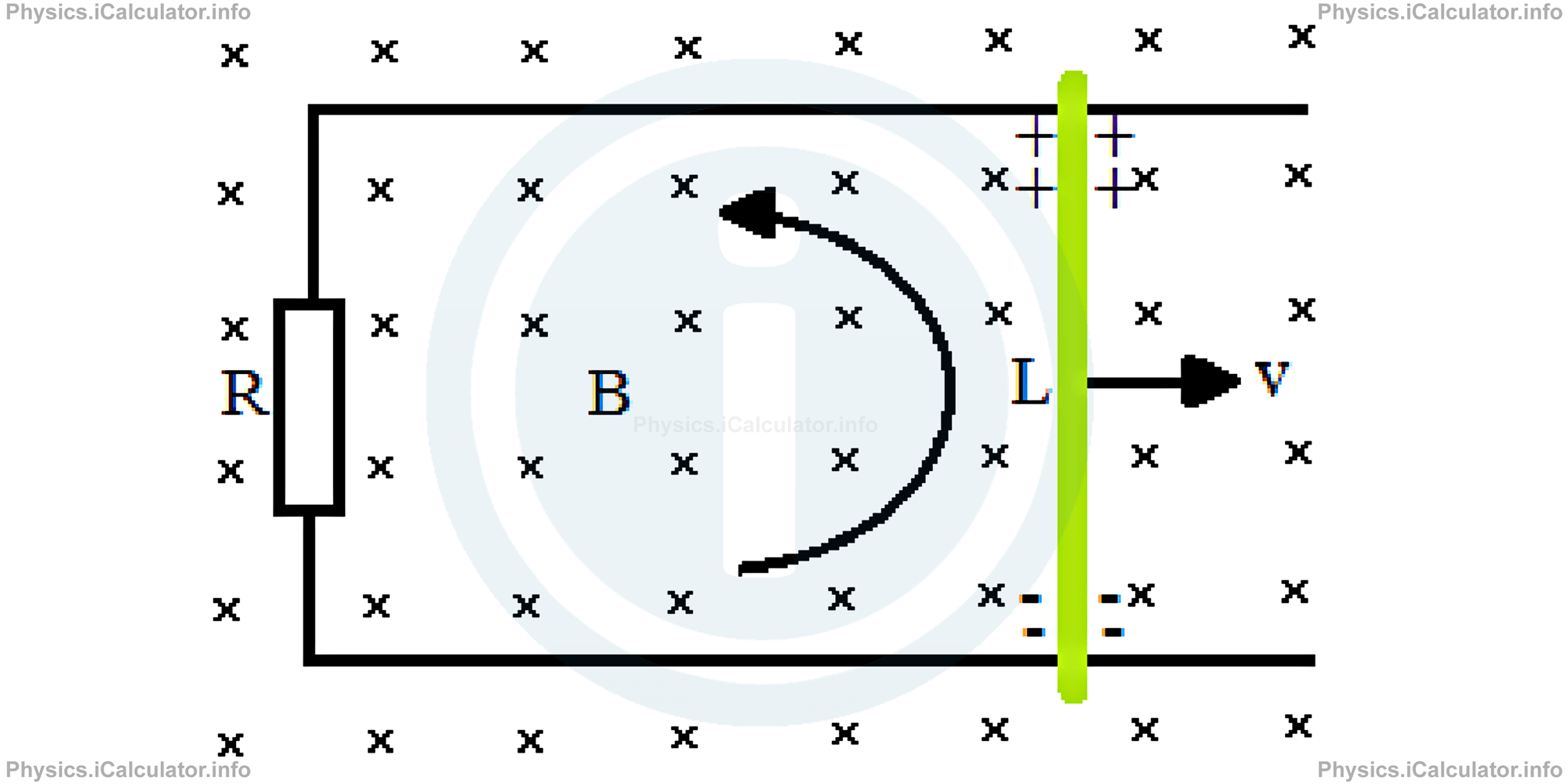
then, electrons will move in the clockwise direction throughout the circuit due to the existence of emf produced by the source. (Remember the direction of conventional current is opposite to the direction of electron's flow).
The value of current I flowing through the circuit in this case, is
where R is the resistance in the circuit.
Example 2
At what speed should we move a 50 cm bar as shown in the figure below to produce a current of 0.4 A if the bar touches the two opposite sides of a circuit having a resistance of 20 Ω? The plane of circuit (including the bar) is normal to a 2 T magnetic field the direction of which is into the page.
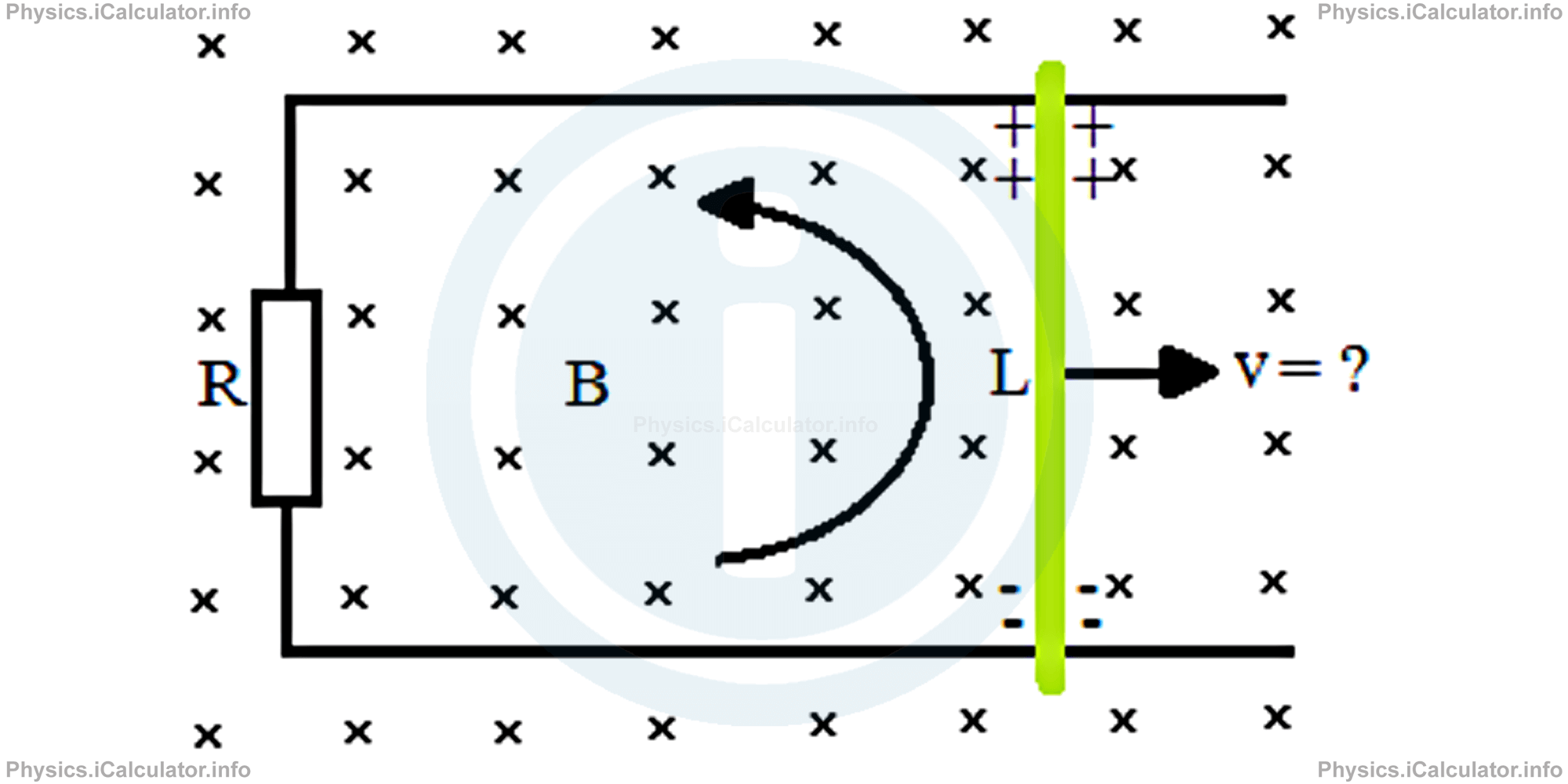
Solution 2
Clues:
L = 50 cm = 0.50 m
I = 0.4 A
R = 20 Ω
B = 2 T
v = ?
From the equation
we obtain for the speed v after rearranging the terms
= (0.4 A) ∙ (20 Ω)/(2 T) ∙ (0.50 m)
= 8 m/s
You have reached the end of Physics lesson 16.7.3 Induced Electromotive Force as Motional Emf. There are 4 lessons in this physics tutorial covering Faraday's Law of Induction, you can access all the lessons from this tutorial below.
More Faraday's Law of Induction Lessons and Learning Resources
Whats next?
Enjoy the "Induced Electromotive Force as Motional Emf" physics lesson? People who liked the "Faraday's Law of Induction lesson found the following resources useful:
- Electromotive Force Feedback. Helps other - Leave a rating for this electromotive force (see below)
- Magnetism Physics tutorial: Faraday's Law of Induction. Read the Faraday's Law of Induction physics tutorial and build your physics knowledge of Magnetism
- Magnetism Revision Notes: Faraday's Law of Induction. Print the notes so you can revise the key points covered in the physics tutorial for Faraday's Law of Induction
- Magnetism Practice Questions: Faraday's Law of Induction. Test and improve your knowledge of Faraday's Law of Induction with example questins and answers
- Check your calculations for Magnetism questions with our excellent Magnetism calculators which contain full equations and calculations clearly displayed line by line. See the Magnetism Calculators by iCalculator™ below.
- Continuing learning magnetism - read our next physics tutorial: Lentz Law
Help others Learning Physics just like you
Please provide a rating, it takes seconds and helps us to keep this resource free for all to use
We hope you found this Physics lesson "Faraday's Law of Induction" useful. If you did it would be great if you could spare the time to rate this physics lesson (simply click on the number of stars that match your assessment of this physics learning aide) and/or share on social media, this helps us identify popular tutorials and calculators and expand our free learning resources to support our users around the world have free access to expand their knowledge of physics and other disciplines.
Magnetism Calculators by iCalculator™
- Angular Frequency Of Oscillations In Rlc Circuit Calculator
- Calculating Magnetic Field Using The Amperes Law
- Capacitive Reactance Calculator
- Current In A Rl Circuit Calculator
- Displacement Current Calculator
- Electric Charge Stored In The Capacitor Of A Rlc Circuit In Damped Oscillations Calculator
- Electric Power In A Ac Circuit Calculator
- Energy Decay As A Function Of Time In Damped Oscillations Calculator
- Energy Density Of Magnetic Field Calculator
- Energy In A Lc Circuit Calculator
- Faradays Law Calculator
- Frequency Of Oscillations In A Lc Circuit Calculator
- Impedance Calculator
- Induced Emf As A Motional Emf Calculator
- Inductive Reactance Calculator
- Lorentz Force Calculator
- Magnetic Dipole Moment Calculator
- Magnetic Field At Centre Of A Current Carrying Loop Calculator
- Magnetic Field In Terms Of Electric Field Change Calculator
- Magnetic Field Inside A Long Stretched Current Carrying Wire Calculator
- Magnetic Field Inside A Solenoid Calculator
- Magnetic Field Inside A Toroid Calculator
- Magnetic Field Produced Around A Long Current Carrying Wire
- Magnetic Flux Calculator
- Magnetic Force Acting On A Moving Charge Inside A Uniform Magnetic Field Calculator
- Magnetic Force Between Two Parallel Current Carrying Wires Calculator
- Magnetic Potential Energy Stored In An Inductor Calculator
- Output Current In A Transformer Calculator
- Phase Constant In A Rlc Circuit Calculator
- Power Factor In A Rlc Circuit Calculator
- Power Induced On A Metal Bar Moving Inside A Magnetic Field Due To An Applied Force Calculator
- Radius Of Trajectory And Period Of A Charge Moving Inside A Uniform Magnetic Field Calculator
- Self Induced Emf Calculator
- Self Inductance Calculator
- Torque Produced By A Rectangular Coil Inside A Uniform Magnetic Field Calculator
- Work Done On A Magnetic Dipole Calculator